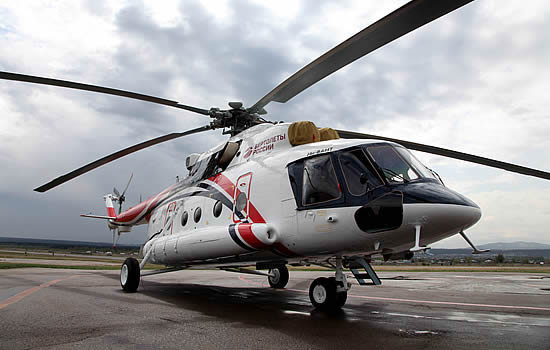Moscow Civilian Mi-8AMT Arctic helicopter goes into production |
Following a successful flight test programme, Russian Helicopters has started serial production of the Mi-8AMT Arctic helicopter for civilian customers.
The rotorcraft's main features include a unique system for heating transmission parts that provide quick engine start in extremely low temperatures, even if the helicopter is deployed without a hangar for long periods of time. The system is complemented by an improved system for thermal protection of the cargo cabin and special thermal insulation shutters in the sliding doors and cockpit doors. Special covers protect the helicopter from low temperatures, high humidity and strong winds and freeze-resistant Teflon hoses are used instead of rubber.

"The new Mi-8AMT helicopter will be sought after by many Russian companies and government agencies implementing projects and tasks in the Arctic," said Russian Helicopters Director General, Andrey Boginsky. "The first rotorcraft is ready to start operation, and negotiations with several potential Russian customers are underway."
The helicopter is equipped with two additional fuel tanks, which allow it to fly long distances - an important factor for northern districts with low population density. The Arctic version of Mi-8AMT can fly up to 1,400 km. An emergency floatation system can also be installed on the helicopter to fly over a vast area of waters in the Arctic.
"This helicopter is necessary for air medical services, maintenance of facilities of the fuel and energy complex, and for meeting the needs of polar expeditions. It may also help organize transportation in northern regions," said Managing Director of Ulan-Ude Aviation Plant Leonid Belykh.
When the helicopter was designed, great attention was given to ensuring that it is capable of flying over the Arctic terrain with few features, in the conditions of polar night, harsh weather, and when satellite and radio signals are lost. For that purpose the rotorcraft is equipped with a special navigation complex.
The complex includes several navigation systems for locating the helicopter, a radar with horizontal and vertical sweep of information on the weather, a digital autopilot, and radio stations with a wide range of frequencies. The helicopter is capable of automated hovering, flying a planned hovering route, and landing. The navigation system considerably reduces the load on the crew, and ensures greater safety of the flight.
BlueSky Business Aviation News | 25th June 2020 | Issue #563


